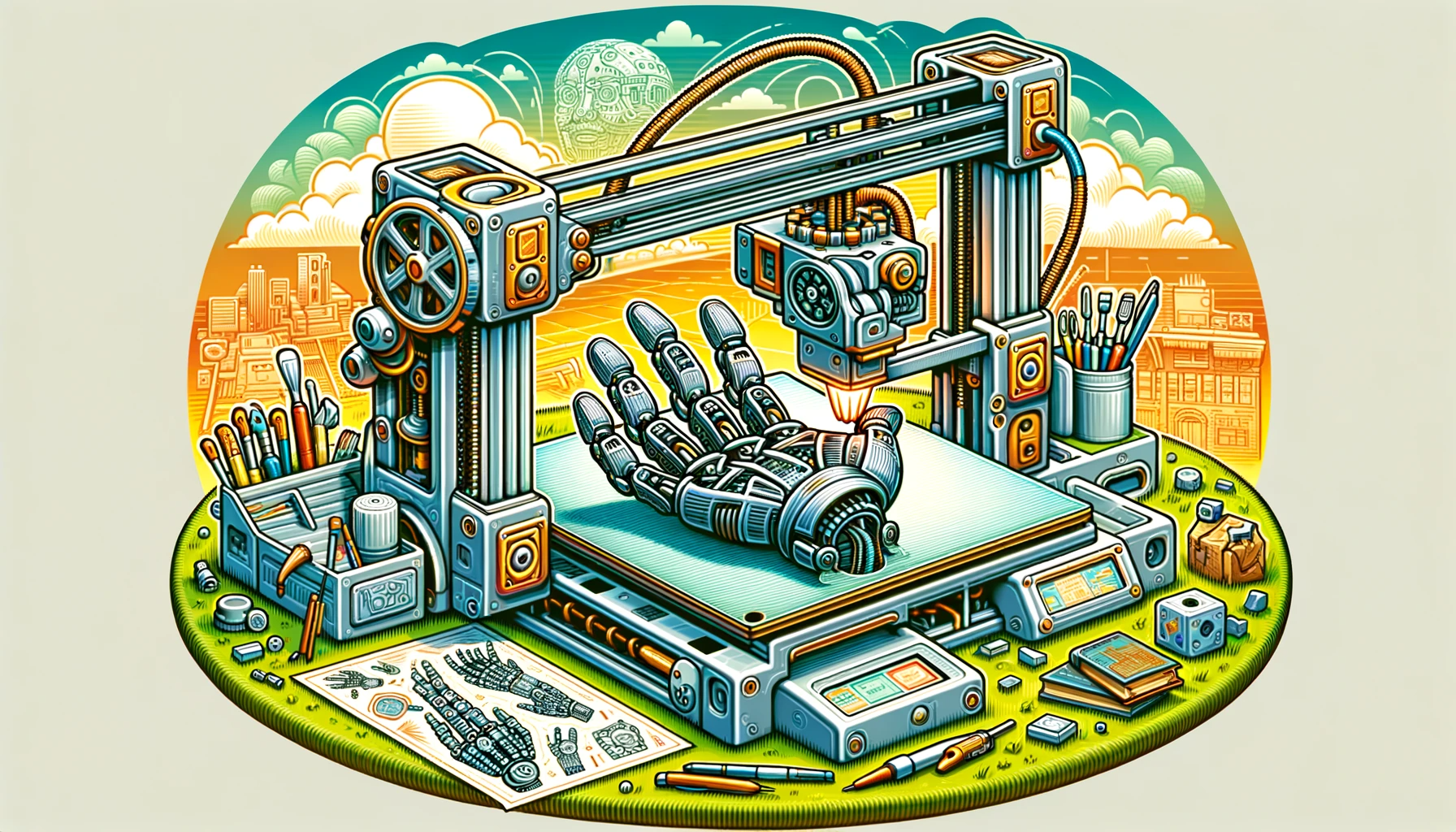3D Printing of Robotic Hand with Functional Ligaments and Tendons

A skeletal robotic hand with functional ligaments and tendons can now be 3D printed in a single run. This amazing achievement has been made possible through a new approach to additive manufacturing that can print both rigid and elastic materials at high resolution.
New Approach to Additive Manufacturing
This innovative work is the result of a collaboration between researchers from ETH Zurich in Switzerland and Inkbit, a spin-off from the Massachusetts Institute of Technology based in Medford, Massachusetts. The group developed a new inkjet 3D printing technique capable of using a wider range of materials than previous devices.
In a new paper published in Nature, the group demonstrates for the first time that this technology can be used to print complex mobile devices composed of multiple materials in a single operation. This includes a biologically-inspired robotic hand, a six-legged robot with a gripper, and a pump similar to the human heart.
Inkjet 3D Printing
This new inkjet 3D printing technique works on principles similar to those of a conventional desktop inkjet printer. However, instead of using colored inks, this printer sprays resins that harden when exposed to ultraviolet (UV) light. Additionally, it can print at extremely high resolution, with voxels (3D equivalents of pixels) only a few micrometers in diameter.
Expanded Material Range
While inkjet 3D printers are not new, the range of materials they could use was generally limited. Inkbit solved this problem by developing a printer with a mobile platform. This platform moves under multiple inkjet units, a UV curing unit, and a scanning unit. After depositing and curing a layer, the scanner creates a depth map of the printing surface, which is then compared to the 3D model. This comparison allows adjustment of the deposition flow from the inkjet units to correct irregularities.
Printing the Robotic Hand
To demonstrate the potential of this new technology, researchers printed a robotic hand. This hand features rigid bones modeled from magnetic resonance imaging (MRI) of human hands and elastic tendons. These tendons can be connected to servomotors to fold the fingers toward the palm. Each fingertip also has a thin membrane with a small cavity at the back. This cavity is connected to a long tube printed into the finger structure. When the finger touches something, the cavity is compressed, which increases pressure inside the tube. A pressure sensor at the end of the tube detects this pressure and uses it to command the fingers to stop folding once a certain pressure is reached.
Potential Applications
Besides the robotic hand, researchers also created a six-legged robot powered by compressed air with a functional gripper. They also manufactured a pump inspired by the human heart. This pump has one-way valves and internal pressure sensors and is capable of pumping 2.3 liters of liquid per minute.
Towards More Advanced 3D Printing
Future work will aim to further expand the range of materials the printer can use. Currently, it is limited to materials that can harden under UV light and are not too viscous for use in an inkjet printer. However, this technology could open the door to using hard epoxies, hydrogels suitable for tissue engineering, or even conductive polymers allowing the printing of electronic circuits in devices.
This article is sourced from:
Robot Hand With Working Tendons Printed in One Go
Multimaterial 3D-printing approach produces functional devices in a single shot
author: EDD GENT

